
(Note from 2010: The description of my playback is way outdated. I'll do a write up about changes sometimes in future .)
"But listen now, my gifted one, while I say I have heard with pleasure the music and the poetry, but yet not without some misgiving the sense. For poesy, dear little one, poesy is always a alluring, seductive, dangerous thing. Sense and senses lei close together, and song rhymes all too easily with wrong, grace and charm are prone to gracelessness and harm, if they are not bridled by concern with God. Lovely it is play of thought; but holly the spirit alone. Poesy is play of hart and mind; winningly I applaud it, so long as it loses not sight of spirit but remains in the end concern with God…. But poetic license is not only license in your song, it is altogether a string of disrespectful and cheating make-believe. You may think to please me by it; but pleasure founded on falseness is not true pleasure, nor can it profit the soul. Dare poesy lend itself to such, is that its province? You are not abusing your gift from God to dress it in such untrue and unreasonable things? Verity there must be some reasons allied to the beauty, else it only mocks the heart." - Thomas Mann’s "Joseph and His Brothers"
Introduction and Objectives
Before talking about audio, audio methods, audio tools and the audio results it
is important to define the scope of the conversation. A playback system does not
produce music. I would say even more: a symphonic orchestra in a Symphony Hall does
not produce music. They both produce just an opportunity to become music and the
keys for this transformation are located in our consciousness. Music is an interaction
between our awareness and reality; between our perception of ourselves and what
we are; between our personal insight and a composite consciousness. Those tonal
harmonies and sonic phraseologies that we employ to express Musicality are just
extrapolations of something way more global and way more universal. Musicality
exists "as is" and it does not necessarily require any intellectual or conscious
recognition or confirmation: it exist "as is" just because of our need to have our
perception and our attentiveness expressed and our grasp of Reality to be passed
out further on….
Music is an expressed artifact of our objectives, our desires and our intentions
to share what we are by means of a universal communicative language. The real, pure
musicality exists in those prodigious moments when you compose music: when you sense
those non-articulated sensations and reflect them in sonic harmonies. Once the music
has been expressed, it begins to live own independent life, and it, like a sponge,
begins to cocoon itself in multiple aftereffects. Documentation of music, interpretations
of the composer's intentions, collaboration on the expressed musical idea, didactic
music performing, a common for our musical culture thematic embellishments and many
other factors… builds a superstructure around the initial musical "strategic intentions",
and although it unquestionably publicizes the initial musical intent it also introduces
a great contamination of the initial musical core by a "common pollution"
of our musical culture.
Performed music is music contaminated, or in some instances enriched, by a fused
awareness of many people: conductors, musicians, various environmental variables,
listeners and few others. To observe the delta between the raw "primary musicality"
and "live" music delivered to us as a "Symphony Hall’s product" is one is the most
fascinating parts of dealing with music. However, in case of a Recorded and Reproduced
music there is something else on a picture. Sound reproduction injects into a sandwich
of the "delivered music" one extra level of contamination – the interpretation of
the original musicality/performing intentions by the soulless algorithms of a sound
reproduction chain. Any humane interpretation, even corruptions or aberrations,
have own causes and motives; they can be related to because they are based of a
common to us sense of humanity, reasons and consequences. Contrary to this,
the mechanisms of "unconscious" sound reproduction: the eclectic and mechanical
conversions themselves can not relate to the initial musical initiatives (although
there is much more in here to talk) and their injections into the Reproduced Musicality
introduce a permanent de-humanized layer, that is an unfortunate obstacle for our
humane listening consciousness, and that obstacle impedes our ability to find a
relation between our own experiences and the experiences of the expressed musical
idea.
I know how reproduced music should sound…. Actually sound of reproduced music, in
the sense in which audio people usually understand it, is something that is not
exactly important.Sounditself has no meaning, purpose of relevancy. Any more or
less objective or meaningful reason and purpose of Sound might be observed only
in context of a human-listener and the Six-Levels Listening Benefits™ that
a listener might get from his/her relationship with musicality. When I said that
I know how reproduced music should sound I meant that I have a grasp how my inner-me
should react to the specific external sonic irritations (music) and how
(in many but not in all cases) my inner-me might react to the initial musical ideas
(although there is in here a lot more to discuss about it). In audio, the observation
of the reasons and consequences according to which our listening attentiveness stumbles
while it is being exposed to music, and the recognition of how playback interacts
with musical initial core/idea allows us to build the success/failure patterns and
figure out which audio method and which audio applications might work more or less
successfully for the idea/music/machine/human communication chain. Each particle
of a playback system, while serving its own reality-conversion purpose, introduces
its own operational residue (I intentionally and with my reasons do not use the
term "distortions"). There are many types of residues, some of them static, some
of then dynamic, and as Claude Shannon suggested in his theory of propagations within
communication tunnels, they do modify the objectives of the original intent and
they do modify the values of the original messages.
When in the beginning of the above paragraph I said that I know how reproduced music
should sound I did not really mean how it sounds "live" (although I do know). What
I meant was that I know how ideas might sound when bypassing their reproduction
by musicians (there is much more to it). Looking further into the audio world, all
those unintelligent audio talks about playback systems that deliver "you are there"
or "they are here" are complete foolishness. How many times did you go to a Symphony
Hall and had no real communication with musicality? To judge sound reproduction
by evaluation how reproduced music sounds in comparison to "live" music is as bogus
as judging quality of steak by amount of ketchup it was served with.
The most important part in becoming an evolved audio/music listener is to recognize
and to learn to feel organically a fundamental absence of differences between composed,
performed and reproduced music.
I know how reproduced music should sound and for me, building of a playback is very
similar to a conducting of an orchestra. The musical core, the idea, is there, and
we, as a primary responsible party for the result in our listening rooms, shape
sound by all available for us means in order to deliver the ideas via music. All
elements of audio sequence interrupt (totally brainlessly and totally non-humanely)
music in one way or another, and we, the conductors of our playback systems, craft
our installations to portray our visions: how it should reveal our demands for sonic,
tonal, dynamic, emotional, esthetical and ethical truthfulness; how the initial
musical idea might transform and alter itself under the stress of audio ceremony.
Those "alterations" might be beneficial (supporting the initial idea) or not; this
is one of the keys of audio meaning. Our demands to the "live" and recorded music
are absolutely identical and therefore the results we get out of recorded
and "live" music should be identical as well. Yes, there are a lot of added benefits
and additional expressive elopements in "live" music but the Real Audio starts from
the listener’s capacity to extrapolate and reconstruct own listening demands using
recorded music as a Musical Offerings or as Opportunities but not as anal
retentive, pre-caned sonic reference. I do a large amount of my listening using
$50 worth table radio and in very many instances I do it without any degradation
to my listening experiences… OK, if it is true then what all that "high-end audio"
is all about?
Frankly speaking, the "high-endness" of audio is totally artificial thing and is
totally unnecessary. I would tell you even more: there is no direct relation between
audio and musicality. Our ability to engage musicality exist "as is" and has no
relationship to music reproduction event. Audio is a totally isolated, self-encapsulated
domain of knowledge, with own language, own methods, that although have a consequence
to music, but reproduction as "means" should not be mixed and confused with musicality
as "further demands". To keep a proper intellectual distance between the demands
of musicality and between the demands of audio should be one of the most
important objectives of a established audio listener. "High-endness" of audio still
might be beneficial but it is very much not mandatory and the importance of the
"High-end audio" very much moderated by the adjectives that will be used with the
term "audio". Therefore, from here and on I will be talking about Audio as about
a totally isolated domain of human knowledge as it should be. (It is will be true
at the first 5 levels until the relationship with audio and musicality reach the
last level of the Six-Levels Listening Benefits™). Audio relates to Music as a general
intelligence of a person relates to his ability to do cards counting: it might be
related but it is not necessary go affinity.
I believe I know how reproduced music should sound and I was trying to build a playback
system according to this believe. There is no needs to listen a musician or a conductor
who has nothing to say and there is not needs or interest to listen or build a playback
system without any objective or purpose or without any intention to say anything.
My system has a lot of "attitude" and it is as far as possible from any imaginary
"audio neutrality", as audiophiles generally understand it (actually they understand
very little I many subjects as they just chew over the BS that was furnished to
them by the funny audio propaganda). My playback does have neutrality, an insultingly
powerful neutrality, but this neutrality is of a totally different kind.
In fact the only direction I work on my system is to make this "attitude-neutrality"
more forceful and persuasive.
What I am talking about? It is my vision that a playback system must be an active
collaborative filter that should "recognize", pre-structure, pre-interpret and pre-analyze
reproduced music and deliver to a listener not only the recorded material but also
the result of the "recognition". Basically it boils down to the fact that a playback
system should filter out "bad" music, poor interpretations, weak thinking and present
them with a negative sonic radicalism using all possible means of human-machine
interaction to make a listener turn away from listening to what s/he should not
listen. Contrary to this if music is "good", and the interpretation, ideas and performance
"are loaded with…" then a playback system should embrace it and deliver it in a
way that would encourage "consumption" . With a "smart" playback system
you should hardly be able to breathe when Golovanov with Russky’s Radio Orchestra
perform the Rachmaninoff’s Second Symphony, Horowitz performs the Schumann’s Toccata
"C", Myung-Whun Chung with Bastille perform the Saint-Saens Third Symphony, Scherchen
with Vienna perform the Liszt’s Symphonic Poems, Heifetz plays in 1920s or Hoffman
plays in 1910s. From a different perspective any, even the highest "quality" recordings,
poorly "understood" and even excellently performed, should make you to feel bored
and appalled: Ansermet with Royal Opera performing the Ballet Suits, Dorati with
Concertgebouw performing Tchaikovsky, Abbado with Chicago performing Mahler, Menuhin
with Erede and the Royal Philharmonic play Paganini Second Concerto …. this list
might go on and on as well.
Yes, a playback system is just a pile of electronic and mechanical conversions and
adaptations and it has no self-awareness but still, as with any engineering accomplishment,
a playback system might and should serve a humanly beneficial purpose.
There are very many buttons and levers that could be pushed while a playback system
converts a Reality of the initial event into a Reality of reproduced music and I
am not taking about the foolish tweaking or the feeble audio shamanism that the
countable audio-Morons ™ use to cure own paranoia and lack of understanding what
they deal with. Those buttons and levers are quite numerous and all of them have
direct dealings with our musical perceive-ability, These are a few: an ability of
Sound to move across dynamic range with certain velocity and with certain change
of acceleration - continent upon numerous factors ; an ability of sound to maintain
a certain spatial properly of sound as it’s approximation to the external boundaries
(look at the illustration at the end of the paragraph), a steepness of parabola
with which the notes are rolling to its pitch, a contrast and color of the tonal
discriminations, an injections into reproduced music of various intentional, the
artificial but beneficially-assisting resonance(s) and colorations, meticulous
control and "smart" enforcement of acoustic-like signature of none-acoustic progressions,
harmonic consistency (or inconsistency) of a tone projected to it’s instant vector
of dynamic deviation and many-many others extremely valuable things. Also, and it
is crucially important: all of it must be archived using explicitly-proper execution
methods, as any mechanism that participate in the transformation of an
audio signal participate in the no-escape Beach Effect™
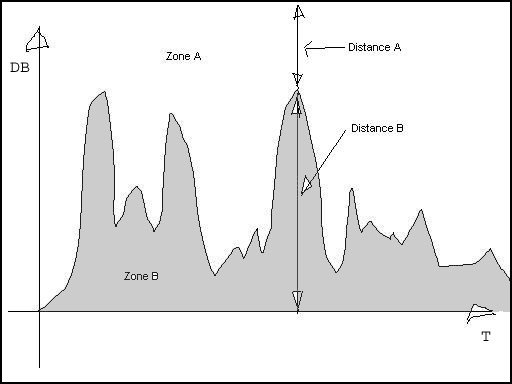
Let pretend that a Zone "B" (gray zone) is a representation of some king of musical
signal (in fact it represents nothing except a brutal projection of Reality to a
cruel mathematical approximation but for the sake of illustrations let accept it
"as is"). The behavior of Sound in the Zone "B" generally describe what we Hi-Fi
sound. I very much disagree with it. Sound (in context of a scientific language-approximation)
might be describe only as distance form the beginning of a coordinate system to
the end of the entire boundary of measurements. (The sumof the distances
"Distance A" and "Distance B") What is named Zone "A" at the illustration is something
that I call X-Space. X-Space is totally overlooked property of Sound reproduction
but it hugely important. The processes that take place in X-Space hugely affect
what happen in the Zone "B" and those processes modulate many perceptional properties
of our consciousness to recognize/identify the messages from the Zone "B".
My playback system is a result of long experiments, mistakes, deceptions, accidental
and intentional successes, foolishness, long thinking, and interpretations of many
events. The system is analysis of my personal results and the results of many others.
Each and every component, element or tool in my system serves a purpose within the
scale of my audio objectives, mainly to have a playback system that would be a forceful
listening filter, an active instrument, an aid. I have a quite well-established
"modus operandi" for my listening evaluations when I bring a new audio component
into my listening room. This is a long topic but very briefly: my major intention
is to recognize the specific property in the performance (of a new component) that
would assure a long-term musical benefit and that would assist me in my navigation
to the direction that I find interesting and motivating. Usually the assessment
spins around of a recognition of how a given new element interprets the specific
musical nuances, and how it operates within the specific "x-properties" of sound
reproduction, few of which I have mention. However, what is essential , that my
evaluation methods are plugged into a much larger and every-connected schema
(the levels 5 and 6 on the Six-Levels Listening Benefits™ scale). I hardly ever
care what a new audio element dose but rather I concern how my inner-me would react
be the new possibilities , that might be furnished by a new audio ingredient.
Anyhow, for sake of credibility, I have to mention that in one way or another, and
due to certain financial flexibility, I have had exposure to the most of the commonly
available commercial elements of so-called High-End audio.
I use my playback system primarily for my private listening, frequently exchanging
a "big system listening" of my "big system" to my $50 worth table radio ("little
system listening") and frequently I do it without any substantial degradation of
my listening experience. I stay explicitly with my "big system listening"
when I’m curious about something in music and when I have motivations to explore
something more deeply, intensely, genuinely and more seriously with a larger degree
of authority. Also, I do my "big system listening" just because it is here. At my
current state of mind I realize that I do really obliged to be dependant from my
"big system listening" anymore but I already have the opportunity to use the "big
system listening" and I consider it as a quite useful supplementary opportunity,
or even, and sometimes, a recreational opportunity. In addition, and it is quite
significant and perhaps is something that drives me in Audio: to learn and to self-educate
myself about the algorithms and patterns of audio ritual is very fascinating and
very rewarding process as I feel that if everything is mentally structured
properly then audio is a wonderful extra-opportunity (like anything else) to continue
to learn who we are and how we relate to anything else.
My listening is 50%/50% of analog/digital and I try do not make any distinction
between the formats. Unquestionably my analog is way more interesting then my digital
but I am not bothered by it and do not alter my listing preference just because
the formats or because of the "better quality" (if I cared just for "quality" then
I should stay with analog tape). I sincerely and arrogantly feel that altogether
the digital result I’m getting in my room is way more interesting then most of analog
installations I’ve heard out there so far, and therefore I do not participate in
the analog vs. digital "thinking slavery" and I try to spin the records and
disks with intentional refusal to acknowledge the material and size of
the disks.
My listening is approximately 95% classical music: probably 30% chamber, 35% orchestral
and 30% vocal/opera music. The other 5% is very selected blues music (I use to be
big blues fan) and very little jazz (primary the older jazz).
The listening habits are very spontaneous: from weeks of no listening at all due
to different personal stresses to the days of not shutting down the "big" system
at all: I’m a religiously-Microsoft centered Information Systems consultant and
sometime have a great luxury to work from home. Work for "audio" quite well…
I generally do not bring Audio people in my home. I consider most of audiophiles
are Zombie-idiots and I feel incredibly bored when they’re sitting in my
room, when I’m spinning for them Josef Hofman playing Rachmaniniff or Furtwangler
playing Brahms and those Morons keep asking me: "Ok, … and where is the famous Romy’s
Sound?" I usually have very high ability to identify the audio-idiots :
my estimate is approximately 97% of all audiophiles out there, and I do not allow
them in my listening room.
I like to listen somebody else’s systems, preferably the large and complex installation
where people have (unfortunately very infrequently) that evolved and "loaded" objectives,
but I have also seen a number of small and inexpensive systems that were quite good.
To listen to somebody else’s serious intent to say/express something by means of
his/her playback is a very fascinating, educational and enriching process.
It is like a reading of somebody else’s book… unfortunately those treats are very
seldom within the "common" audiophile community. Sadly, there are very few really
serious installations that I have found intriguing (there are many reasons why),
and there are very few audiophiles out there who target in Audio something more
then a blindly-idiotic audio-brand’s pack-enthusiasm, and who exercise something
more then his/her total lack of a directional sense and purposeful identity. The
only things that most of the audiophiles target is to fish out of audio a totally
extraneous leisure and convert this superfluous find into a religion. No matter
how this might sound ridiculous or perhaps disgusting for someone but it is honest
and it was what I sincerely feel

The contemporary Hi-Fi movement looks pretty much how it depicted at this wonderful depiction (found somewhere on the Web. I do not know who is the owner of this image). The Hi-Fi people (in their majority) are a group of gone astray folks who used quite questionable means and methods to achieve very questionable objectives.
Analog Sourses
Turntable: Micro Seiki RX8000/RX5000++ tandem. This turntable satisfies my needs for a turntable, offering a lot of room for analog experimentation, has very good, perfectly balanced full-range sound (a big rarity in the turntables world), has no hollow or "pushed" sonic regions, has practically no colorations (if properly used), it also electromagneticly impartial. The 8000 portion performs better then 5000, even though the 5000 is quite tweaked and optimized.
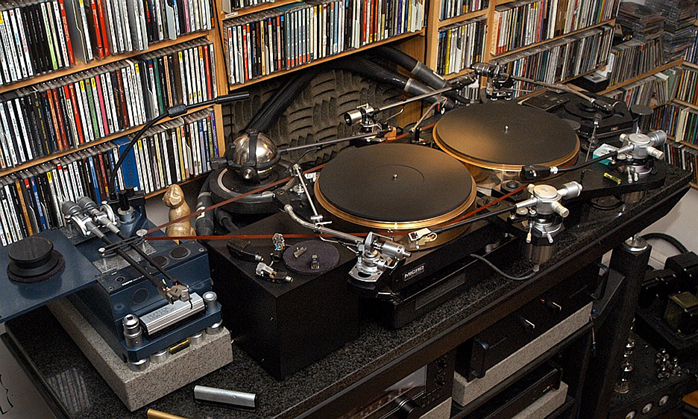
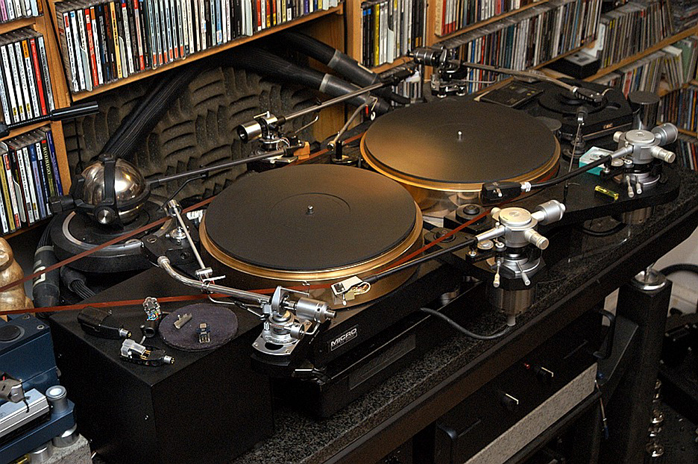
As you can see below the turnable sits atop on a quite rigid way over 1000 pounds 65’ by 46’ stand. The top of the platter - the record level - is at 56". The TT stand was a custom collaboration with Rix-Rax to accommodate 14 components. The stand’s frame is metal, hollow and filled with a mix of sand and led shots, toped with heavy like hell, granite bridges. The turntable and the granite shelf are decoupled by an active Vibraplane.
More about turntables available at:
Tonearms: a couple of Micro Seiki’s MAX 282 (SM, AU, CS), SME 3012R, The "Chernobyl Spinnaker" of the "Sputnik Tonearm", SME M12, SME3009
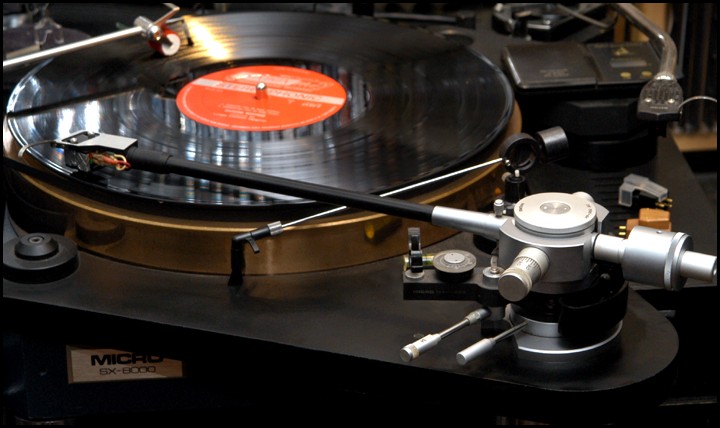
I have a tendency to load cartridges much heavier in arms (contrary to all calculations) bringing the effectible mass of tonearms to 25-30g, still having the primary resonance around 9-10g.
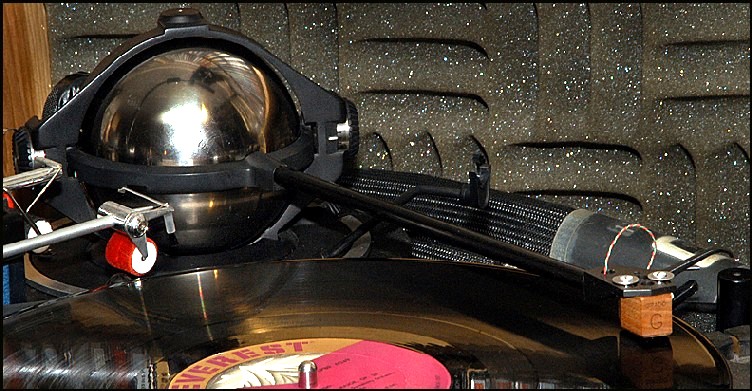
Each of my arms has own functional purpose, mated with own cartridges and with preferably with own phonostage. I have a Reference Stereo arm, a Stereo arm with “another” needle profile, a Mono Arm, a “Special Sound” Arm, a Dirty Arm to play records that I do not care to clean, an Excremental Arm….
More related tonearm reading:
Cartridges: Shelter 901, Koetsu Onyx Platinum, Denons: 102 Mono, 103, 103R, 103D, 103M, some Grado References, Ortofone Jubilee, Ortofon Mono CG 25, Ortofon SPU Mono, Ortofon SPU Stereo Classic, LF Micro Seiki needles…
More related Cartridges reading:
Phono correctors: I use 28dB-gain Expressive Technologies SU1 and SU2 step-up transformers that produces totally out of this world results (and I had/have some other transformers that hopelessly tried to compete: Jensen, Altec, EV, Ear, Shelter, Graham, UTC, S&B, Otophone, Tamura, Denon, Cotter, Siemens, Sowter, some no name brands). I use Expressive Technologies SU2 transformer (the only one unit was ever built and I went to a much extended amount of efforts to get it) with my "reference" cartridge/arm/corrector. The Expressive Technologies SU2 is totally different transformer, with much more advanced sonic result, and it is not just improved Model SU1). It is very difficult for whoever never experience it, if ever possible, to describe the "fertilized sounds" of Expressive Technologies magnetics. The ET magnetics, mated with right corrector for whatever reasons, enormously enriches dynamic range of analog chain, but does it very intelligently, without acceleration of certain areas and without injection any hyper-dynamic accents. The amount of LF and low level details behind ET magnetic is also mind boggling but the most stunning aspect is absolutely astonishing amount of overtones and harmonics that ET introduce to each single shadow of note and the way in which the ET wraps up the “whole sound” all-together.
Here is some information about Expressive Technologies magnetics:
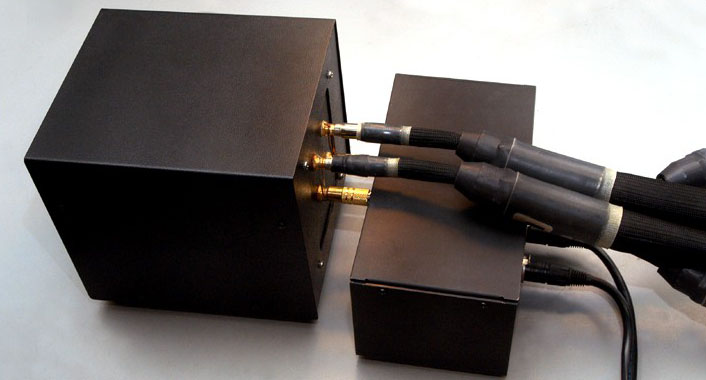
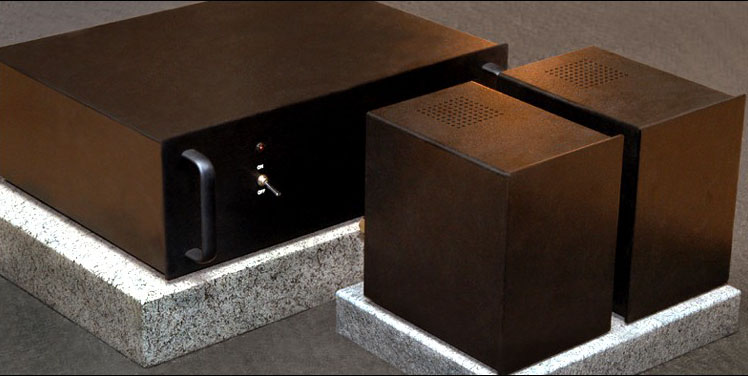
Another my reference phonostage above, It is is two-stages-only, 7788-7721, 64dB-gain phonocorrector "Aulasaulalaraula" with excusive air capacitors and external PS (LCLCC in filament and LCRCRCRCRC on B+). This is the only know to me phonostages that might compete with Expressive Technology transformer + 834PT RAAI corrector.
All advancements of SU2, 834PT and use of air capacitors for RIAA filtration were compiled into my last phonocorrector: “End of Life Phonostage”. You might read about it below
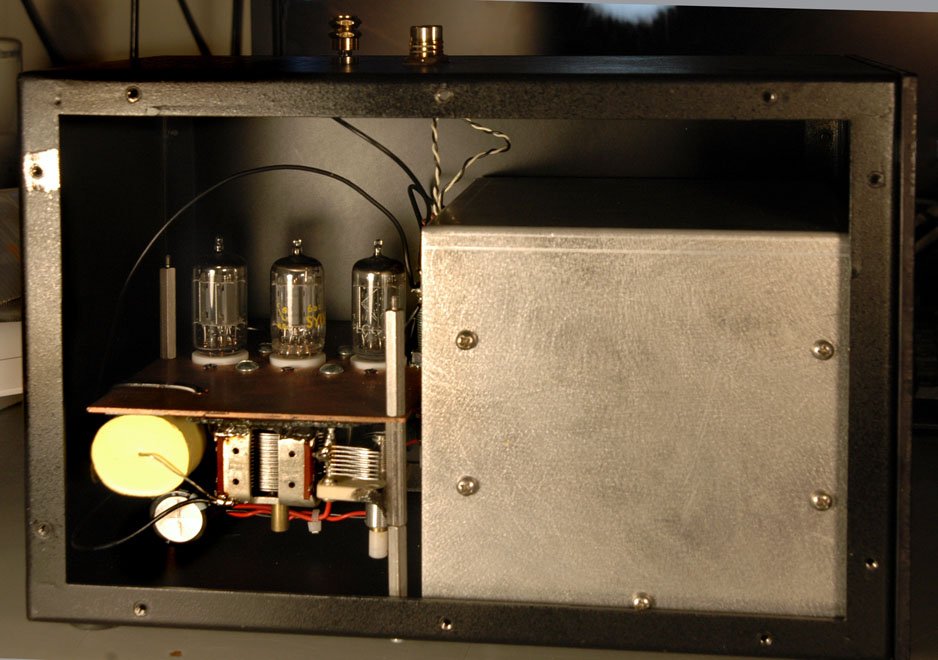
More related phonostages reading::
FM Sources: FM broadcasts are my primary listening source of music – approximately 85% of my listening is from FM – courtesy to Boston’s WHRB, WGBH, WBOQ, WCRB FM stations. I use Sansui TU-X1 and Sansui TU-X1++. I cannot stress now much I love this machine and how much phenomenal music and stunning audio quality FM tuner brings weekly…
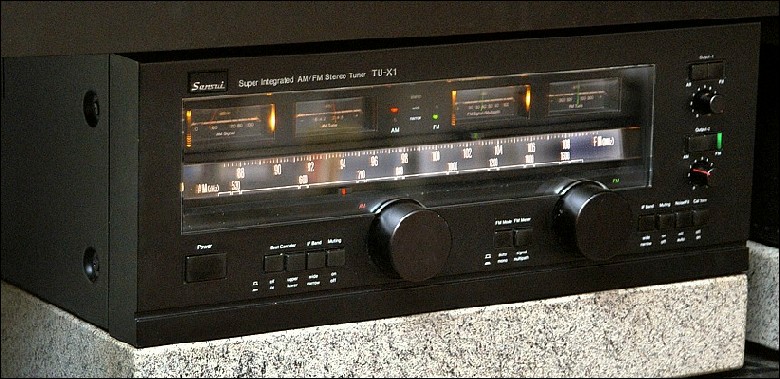
My second FM source is a slightly tweaked Rohde & Schwarz EU-6201 broadcast relay with modified external Rohde & Schwarz’s MSDS and MSDS2 Multiplex decoders. The Schwarzs have very special performing quality and I used them interchangeably with Sansui TU-X1, contingent upon reception conditions
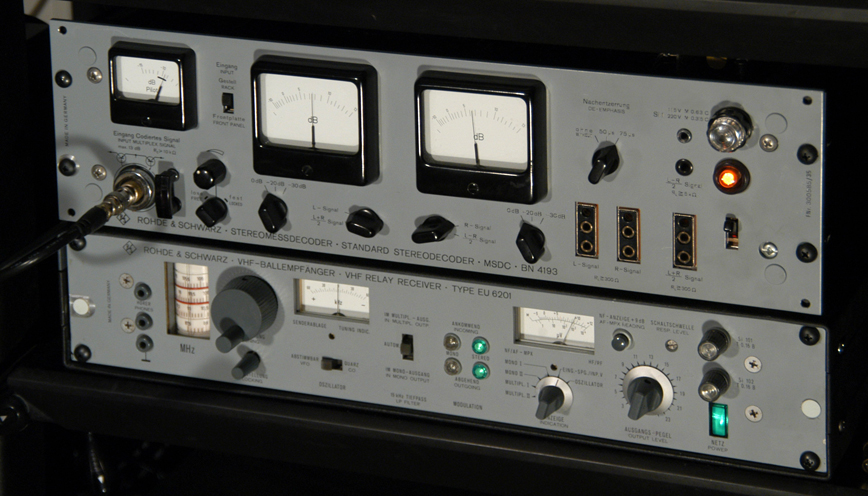
More about FM is available at:
Tape Sourses: I use Kostas' modified Stallavox SU8 for playing or recording and Otari 5050 MK2 to turn the tape and pack the tape up.
Digital Sources
I have to mention that I do not like what I heard from SACD and DVD-A except the
very early experiments when SACD was played for me directly from the drive where
it what recorded. If I remember correctly at that time there were no SACD players
available. When the SACD was placed to the disks and play via those horrible SACD
players it become to sound like garbage.
It is hard even to mention how many PCM transports/players I tried. Among all that
I have seen I found that CEC TLO produced the more interesting result. It is still
not where it should be, as it has slightly thin upper bass and none properly connected
bass to upper midrange, along with some other more minor problems. To fix the upper-bass
problem I’ve done some modifications to TL0’s power supply that worked very well
with other CEC transports but they were way less effective with TL0, practically
not at all. No matter what, the TL0‘s ability to discriminate and to emphasize the
tempos and to inject an unprecedented pace into music (probably due to the spectacular
lowest bass) made me to end up with this transport. There are many other "interesting"
things in the TL0 sound.It is not soft forgivingly sounding transport and most of
the playback systems will not able to handle it’s output because TL0 will be "too
much" for them (and I’ve witnessed it before). It is necessary to have a very serious
DAC and "properly implemented" tweeters (that is very big rarity in audio) to handle
what TLO is able to pump into a digital system.
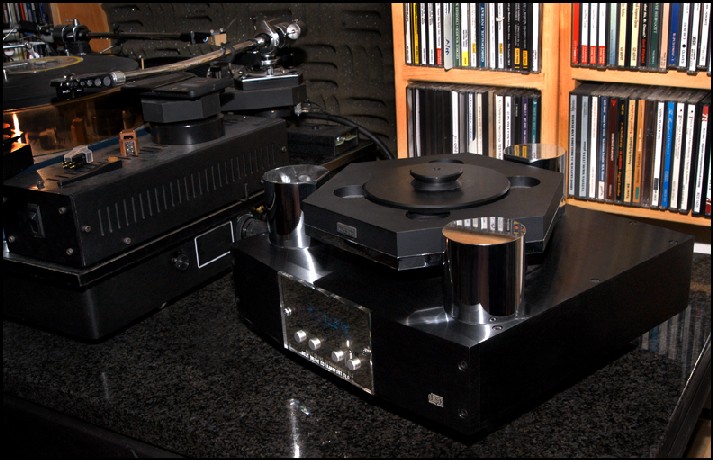
For 16-Bit PCM I use CEC’s TLO MK2 transport feeding it via Synopsis cable one of two external DA possessors: Pacific Microsonics Model One or John Wright modified Meitner’s Bidat with external power supply. Both Bidat and Pacific deliver from my perspective absolutely different type of digital sound that unmatched by any other 16 bit digital and from some perspectives by the digital of high resolution and sampling rate. Both Bidat and Pacific actively react to the speed of processing music and it make them to sound transiently very deferent then any other digital processors I owed or tried. The DAC and CEC are connected via an unavoidably-ingenious older version of Synopsis cable.
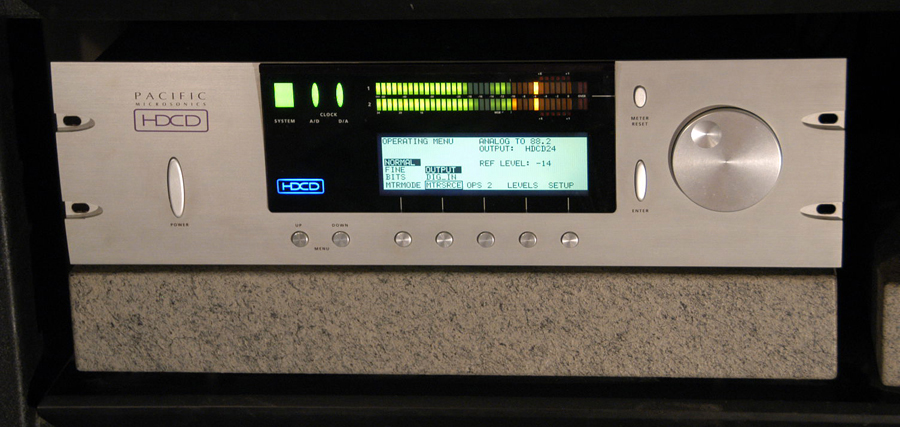
For higher resolution and sampling rate I use a home-cooked DAW to record/play FM broadcasts with AES Lynx 16 digital interface and externals D/A and A/D processors. On DAW side I use mostly Lavry (dB Technologies) AD122 A/D processor Lavry DA924 multibit D/A processors. In some instances, less frequently I use Pacific Microsonics Model Two A/D. The recordings are done in 24/88 via WaveLab-6 as W64 with no following editing or after-processing of the files of any kind. I play the raw files right from the WaveLab-6 to Pacific DA or to Lavry DA, mapping them via Lynx 16's internal mixer.
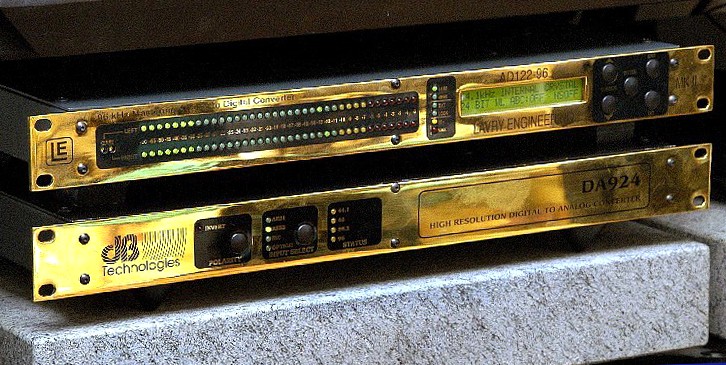
More related about my recordable playback:
Pre-amplification
After years of considerations and trying the few best preamps out there (not to mention countless bad preamps) I ended up using in my installation the customized Guy Hammel’s Placette Active buffer. As far as my demands concern it is the only absolutely-transparent line-level devise I ever experienced in audio.
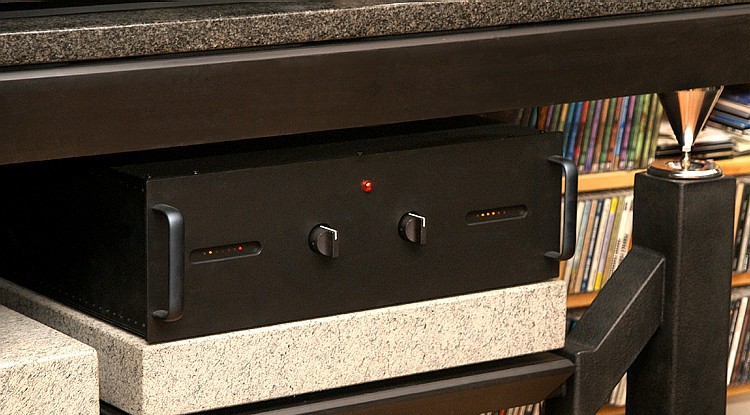
Some further thoughts about pre-amplification:
Amplification
I use Super Melquiades Single Ended amplifier. The amp started a few years back as an “attitude project" and end up with being something truly phenomenal. Initialy it was a full-range 15W Melquiades SET:
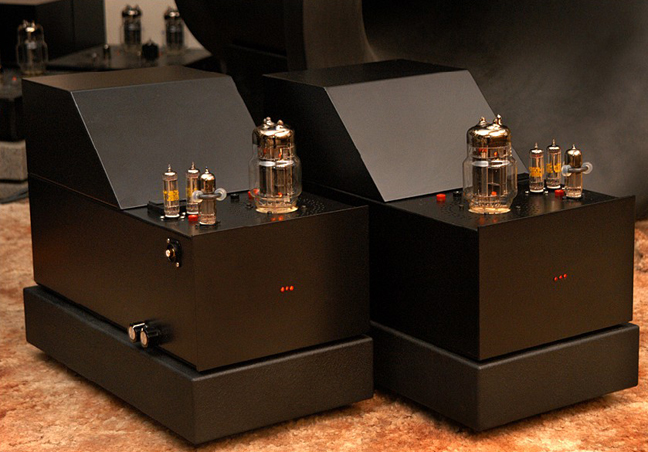
Then Melquiades evolved into 6-channel DSET (Dedicated Single Ended Triode) where each line-level-crossovered channel is optimized for optimum reproduction of a given frequency range and for the very specific needs of a given acoustic system’s load. My 170 pounds Melquiades DSET has 3-channels of 2-stages and 3-channels of single-stage of amplification. It has externals fully choked-regulated power supply and too many other things responsible for the way in which the amplifier sounds.
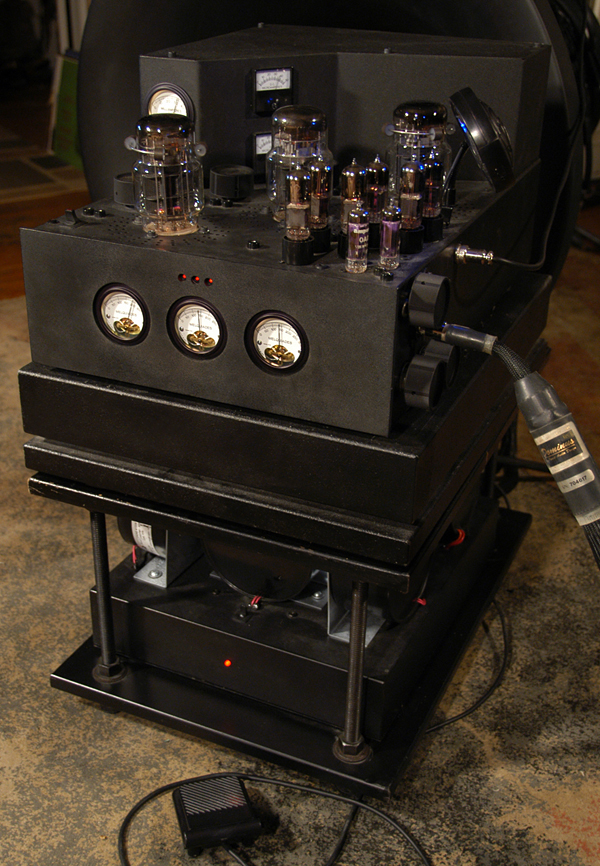
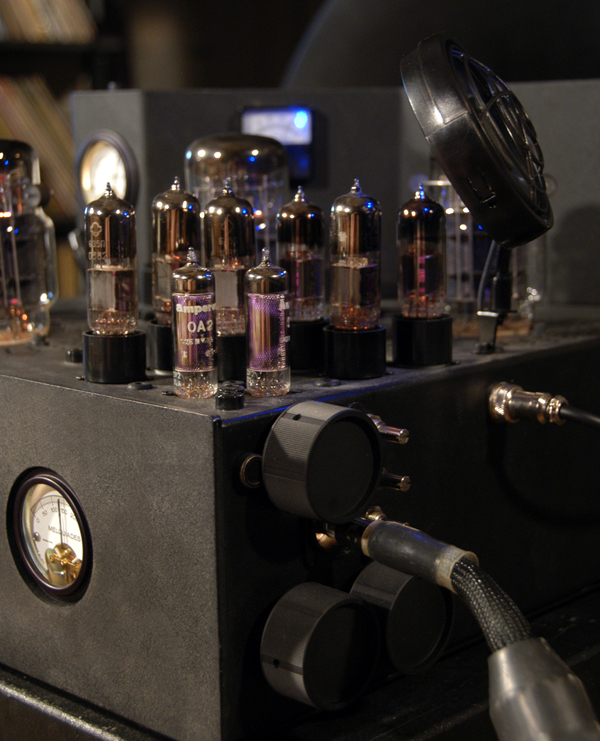
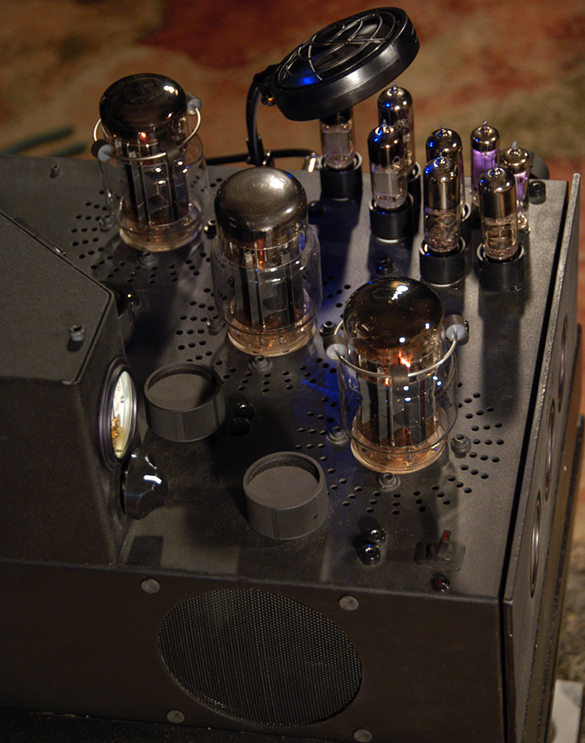
Eventually Melquiades evolved into 6-channel DSET with a DHT direct-coupled double-stages care the MF channel instead of a single-stage amp. DHT cannel was made universal to accommodate the 2.5V tube and 4V tube and I use one of the selected tubes: Telefunken RE604, Klangfilm KL71403, Russian YO-186, a few types of 2A3, a few types of 45, Marconi PX4, Mullard AC044, Valvo LK460, Ferranti P4, Mazda DW302 and a few others. More about the DH MF chennal you might read in the “Single-stage Melquiades vs. DHT amps” thread of my site.
Further reading about Melquiades amplifier:
- Single-stage Melquiades vs. DHT amps
- Melquiades MF DHT chennal
- Melquiades SET Page with Melquiades' circuit (will be updated when I have time)
- Melquiades Amplifier Forum
- A quest for a better SET.
- Melquiades: too early for a verdict?
- “Melquiades” amplifier: a year later
- Super Melquiades Amplifier
- The one-stage Melquiades
- 6 Channel Version of Super Melquiades
- A DSET is better then an expensive SET
Acoustic System
I use my own, custom-built Macondo Acoustic System. Here is a link with more details: A page dedidcated to Macondo Acoustic System
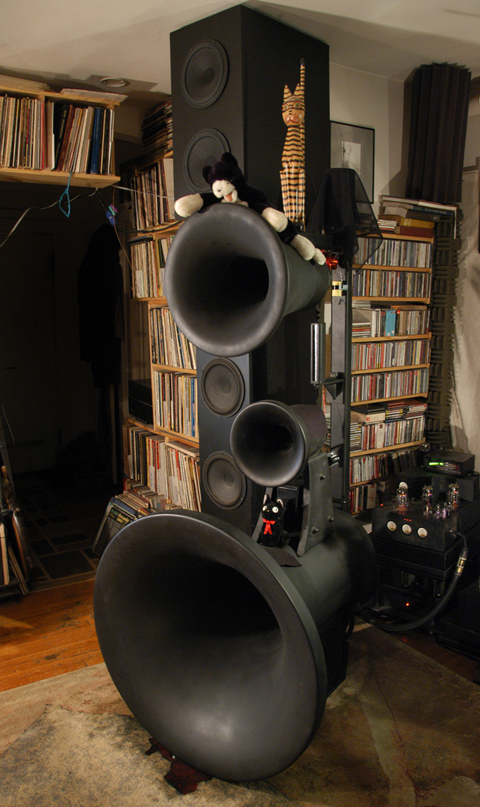
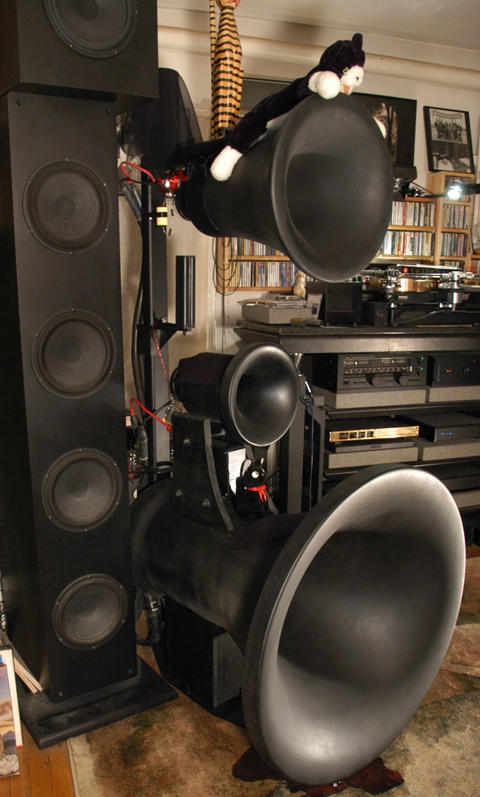

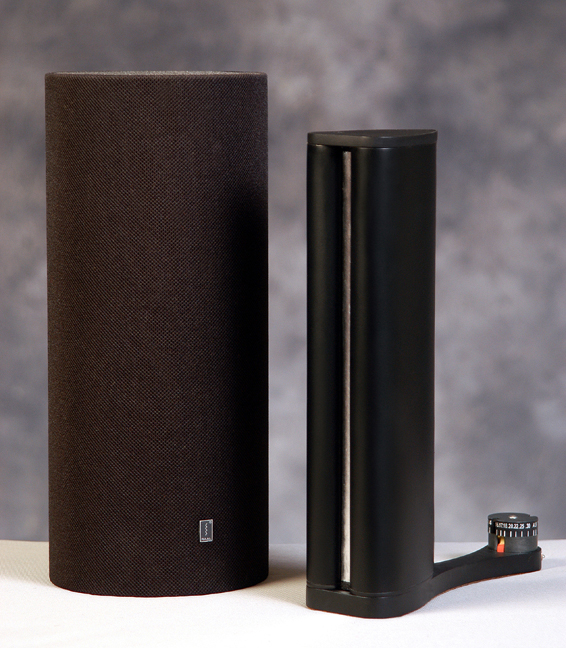
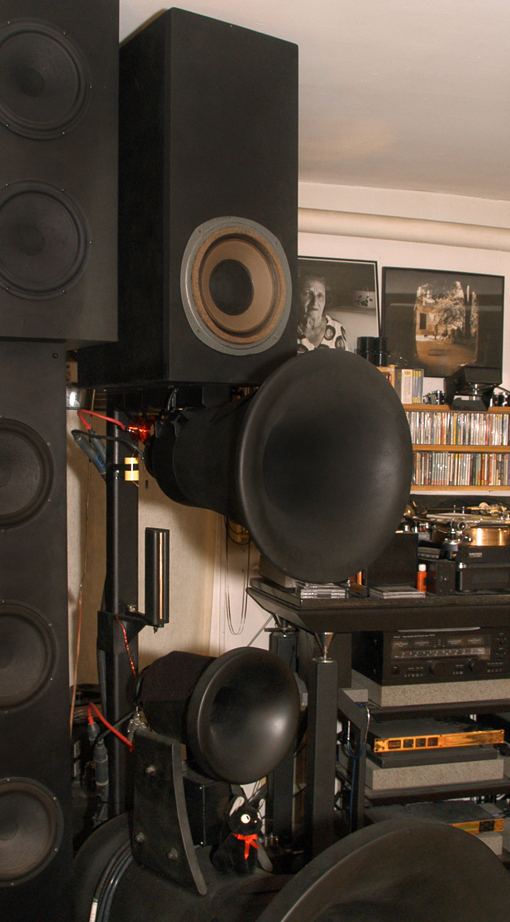
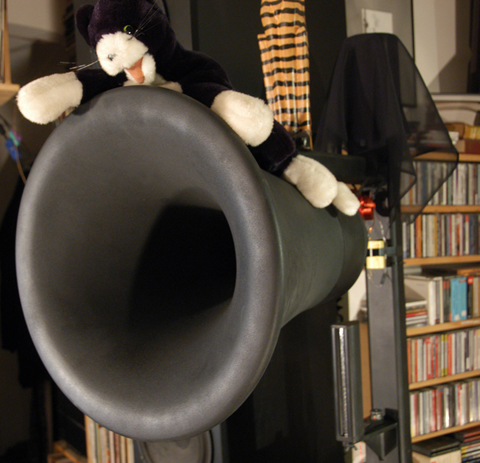
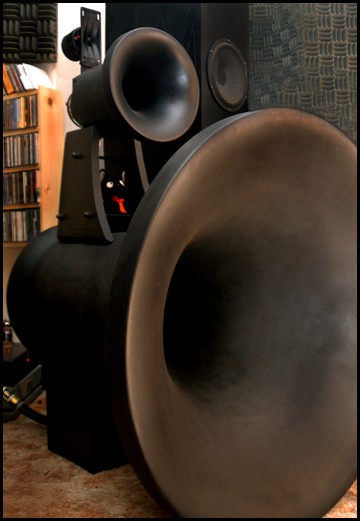
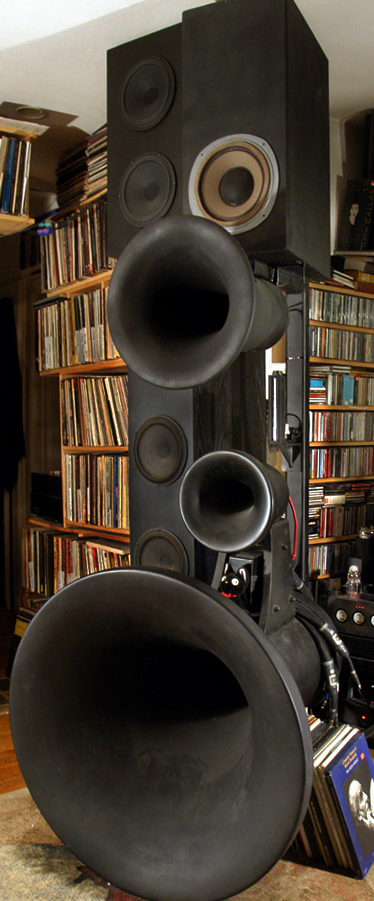

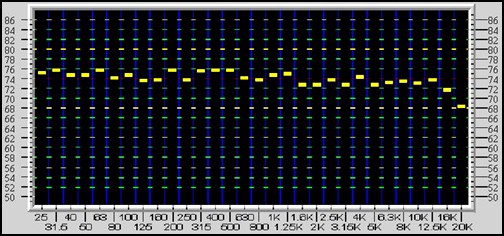
There are some occasional purposeful tricks that I use: a UHF modulator, the extremely powerful RT60 extender and a few other things… These produce very strong subjective listening benefits but they are too complex and finicky to maintain/calibrate during regular listening.
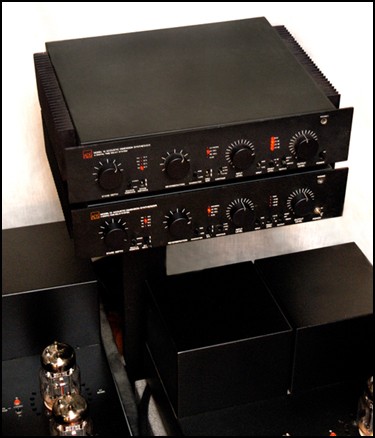
More related reading about my Acoustic System
- Horn-loaded acoustic systems: the Macondo's Axioms
- Macondo Horns: biography
- Macondo Frame modification
- Macondo Alternation. Extending the LF line-array
- Adding one more spherical to Macondo
- MacondoLite
- Vitavox’s S2 Survival Guide
- Vitavox S2 with Electromagnets
- Tweeter for Vitavox S2. High-sensitively ribbons?
- RAAL “Water Drop” tweeter for Macondo
- How to USE “Resonating Oops” in loudspeakers
- SPUnisation of Macondo: how to catch own testicals
- Tannoy Red 1960s: some sober reality
- The elusive “absolute tone”
- Adding one more spherical to Macondo
- The “Primary Frequencies”
- Problems with horns: upper bass
- The Macondo’s Upper Bass Channel: what is next?
- About speakers Imbedded Macro-Positioning.
- Understanding Line Array Systems
- Macondo Alternation. Extending the LF line-array
- About speakers Imbedded Macro-Positioning.
- The “Dead Points of Live Sound”
- Don't position speakers but create Sound in room.
- How to evaluate playback... or the Six-Leveled-Listening Benefits™
Cables, Accessories, etc...
The phono cables are old Micro cables, Purist's Proteus and the Purist's Dominus. The rest of cables, except the power cords, are also from Purist, mostly Dominus and in a few instance Proteus. There is something in older production of Purist. They are more harmonically-sublime than any other wires.
Power-wise, I live in downtown Boston and electricity is a huge problem, problem was. For years I did not use any power treatment devises any power devices: filters, conditioners, regenerators, or isolation transformers – none of them worked appropriately (I have had them all). When Power was good then it was good, when it not good then the only solution is to be disconnected from the Grid and to have 10kW diesel-generator up and running, which I unfortunately can’t use in my urban life…. Recently, after 1.5 year of experimenting with APS Pure Power regenerators they come up with a new version of PurePower 2000, the regenerator that in contrary to anything else I tried actually produces a properly sounding sinusoid ruin sound. So, I had 3 dedicated 20A 8ga lines, separate for my amplification, analog and digital chains and they are sitting empty as I drive the whole system (800W basic and 1.1KW Max) from PP200. My entire system has all components in the same electrical-phase and connected to the "correct-sounding" shoulder of the 220V.
Further reading about audio electricity:
Return to Romy the Cat's
Site
All context of this page Copyright
© Roman Bessnow 2008